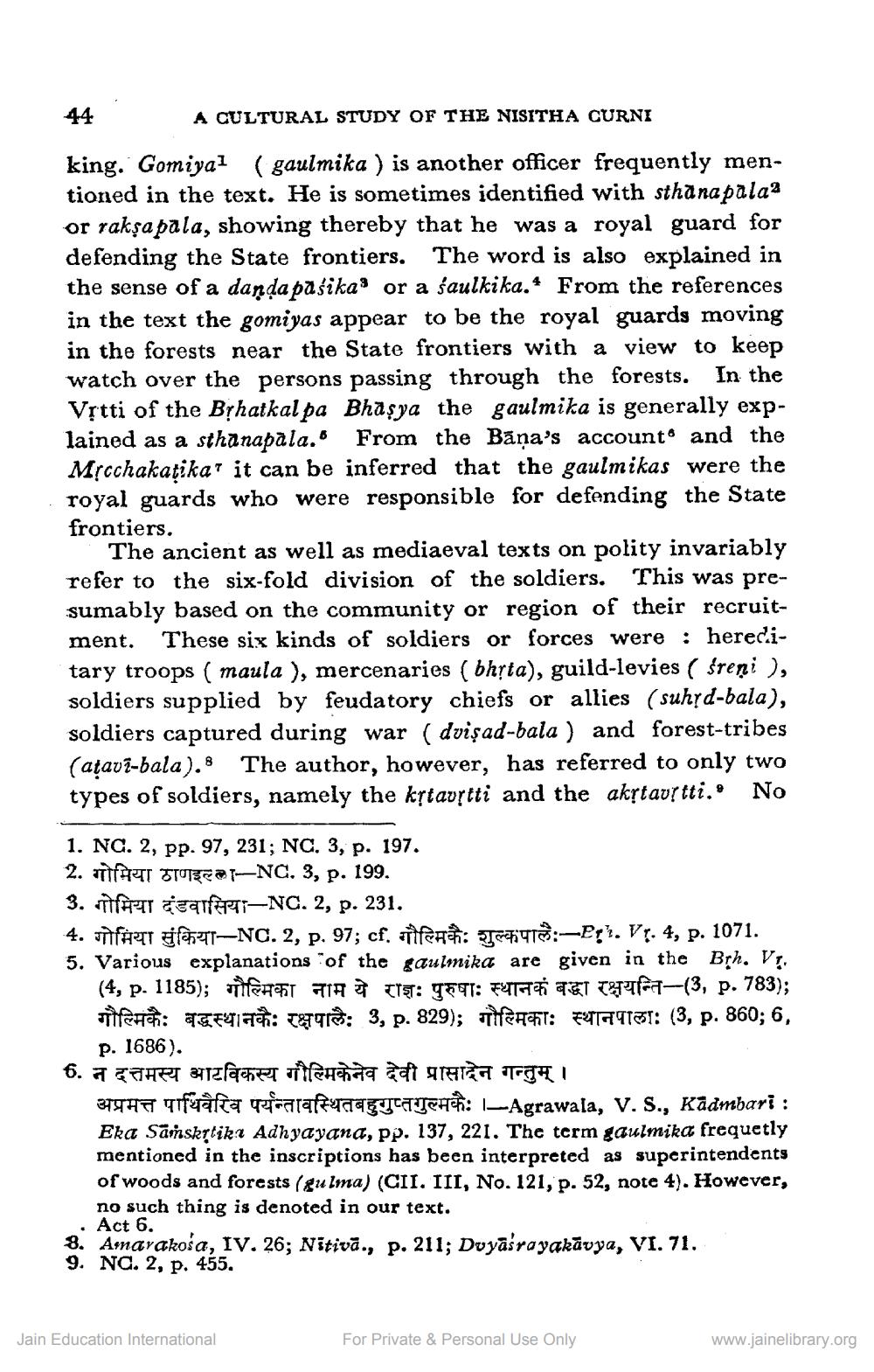________________
44
A CULTURAL STUDY OF THE NISITHA CURNI
king. Gomiyal (gaulmika) is another officer frequently mentioned in the text. He is sometimes identified with sthanapalaa or raksapala, showing thereby that he was a royal guard for defending the State frontiers. The word is also explained in the sense of a danda pasika or a saulkika. From the references in the text the gomiyas appear to be the royal guards moving in the forests near the State frontiers with a view to keep In the watch over the persons passing through the forests. Vṛtti of the Bṛhatkal pa Bhasya the gaulmika is generally explained as a sthanapala. From the Bana's account and the Mrcchakatika it can be inferred that the gaulmikas were the royal guards who were responsible for defending the State frontiers.
B
The ancient as well as mediaeval texts on polity invariably refer to the six-fold division of the soldiers. This was presumably based on the community or region of their recruitment. These six kinds of soldiers or forces were: hereditary troops (maula ), mercenaries (bhṛta), guild-levies (śreņi), soldiers supplied by feudatory chiefs or allies (suhyd-bala), soldiers captured during war (dviṣad-bala) and forest-tribes (aṭavi-bala). The author, however, has referred to only two No types of soldiers, namely the kṛtavṛtti and the akṛtavṛtti."
1. NC. 2, pp. 97, 231; NC. 3, p. 197.
2. गोमिया ठाणइल्ला - NC. 3, p. 199.
3. गोमिया दंडवासिया – NC. 2, p. 231.
4. गोमिया सुकिया - NC. 2, p. 97; cf. गौल्मिकैः शुल्कपालैः - P1. V. 4, p. 1071. 5. Various explanations of the gaulmika are given in the Brh. Vr.
( 4, p. 1185) ; गौल्मिका नाम ये राज्ञः पुरुषाः स्थानकं बद्धा रक्षयन्ति - ( 3, p. 783); गौल्मिकैः बद्धस्थानकैः रक्षपालैः 3, p. 829) ; गौल्मिका : स्थानपाला : ( 3, p. 860; 6, p. 1686).
6. न दत्तमस्य आटविकस्य गौल्मिकेनेव देवी प्रासादेन गन्तुम् ।
aga fata qefalaffeacggaye: -Agrawala, V. S., Kādmbari : Eka Samskṛtika Adhyayana, pp. 137, 221. The term gaulmika frequetly mentioned in the inscriptions has been interpreted as superintendents of woods and forests (gulma) (CII. III, No. 121, p. 52, note 4). However, no such thing is denoted in our text.
Act 6.
8. Amarakosa, IV. 26; Nitiva., p. 211; Dvyāśrayakāvya, VI. 71. 9. NC. 2, p. 455.
Jain Education International
For Private & Personal Use Only
www.jainelibrary.org




